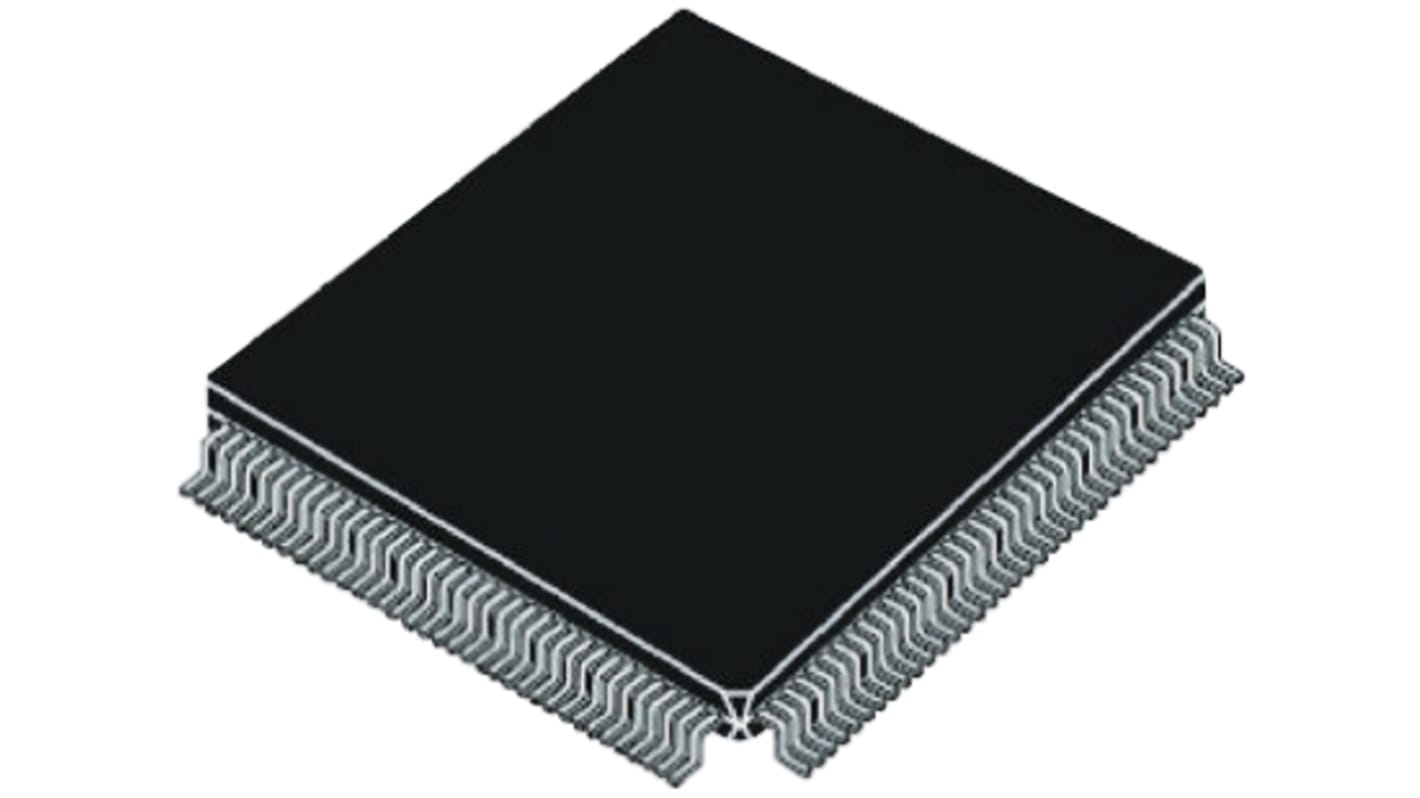Lattice FPGA iCE40HX4K-TQ144, iCE40 HX 3520 Cells, 80kbit, 440 Blocks, 144-Pin TQFP
- RS Stock No.:
- 772-0057P
- Mfr. Part No.:
- iCE40HX4K-TQ144
- Brand:
- Lattice Semiconductor

Subtotal 1 unit (supplied in a tray)*
£6.23
(exc. VAT)
£7.48
(inc. VAT)
FREE delivery for orders over £50.00
In Stock
- 464 unit(s) ready to ship
Need more? Click ‘Check delivery dates’ to find extra stock and lead times.
Units | Per unit |
|---|---|
| 1 + | £6.23 |
*price indicative
- RS Stock No.:
- 772-0057P
- Mfr. Part No.:
- iCE40HX4K-TQ144
- Brand:
- Lattice Semiconductor
Specifications
Technical Reference
Legislation and Compliance
Product Details
Find similar products by selecting one or more attributes.
Select all | Attribute | Value |
|---|---|---|
| Brand | Lattice Semiconductor | |
| Family Name | iCE40 HX | |
| Number of Logic Cells | 3520 | |
| Number of Logic Units | 440 | |
| Number of Registers | 3520 | |
| Mounting Type | Surface Mount | |
| Package Type | TQFP | |
| Pin Count | 144 | |
| Number of RAM Bits | 80kbit | |
| Dimensions | 20 x 20 x 1.45mm | |
| Height | 1.45mm | |
| Length | 20mm | |
| Maximum Operating Supply Voltage | 1.26 V | |
| Maximum Operating Temperature | +85 °C | |
| Minimum Operating Supply Voltage | 1.14 V | |
| Minimum Operating Temperature | -40 °C | |
| Width | 20mm | |
Select all | ||
|---|---|---|
Brand Lattice Semiconductor | ||
Family Name iCE40 HX | ||
Number of Logic Cells 3520 | ||
Number of Logic Units 440 | ||
Number of Registers 3520 | ||
Mounting Type Surface Mount | ||
Package Type TQFP | ||
Pin Count 144 | ||
Number of RAM Bits 80kbit | ||
Dimensions 20 x 20 x 1.45mm | ||
Height 1.45mm | ||
Length 20mm | ||
Maximum Operating Supply Voltage 1.26 V | ||
Maximum Operating Temperature +85 °C | ||
Minimum Operating Supply Voltage 1.14 V | ||
Minimum Operating Temperature -40 °C | ||
Width 20mm | ||
Field Programmable Gate Arrays, Lattice Semiconductor
An FPGA is a semiconductor device consisting of a matrix of Configurable Logic Blocks (CLBs) connected through programmable interconnects. The user determines these interconnections by programming SRAM. A CLB can be simple (AND, OR gates, etc) or complex (a block of RAM). The FPGA allows changes to be made to a design even after the device is soldered into a PCB.
